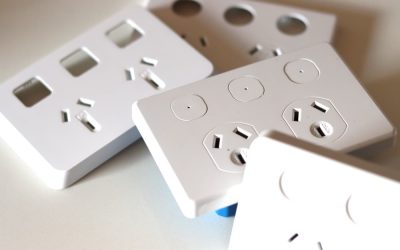It's 2024 and there have never been so many choices for home automation systems in Australia.
But not all home automation systems are equal on performance, price or support - the 3 key decision makers for home owners considering installation of a home automation system in Australia.
Home automation in Australia falls into three broad categories:
- DIY Home Automation - consumer products that plug into a power outlet and require no electrical installation
- Mid market professional home automation systems like PIXIE - typically installed by your electrician and setup by them or by you
- High end Home Automation - These systems are decades old and cost 10’s of thousands if not 100’s of thousands of dollars to deploy and require a computer to “Commission and Program”
Tip #1 - Know your Budget
What’s Your Budget for a Home Automation System?
With the cost of home automation plummeting in the last 5 years, what used to cost $10’s of thousands of dollars can now be achieved for a fraction of the time, inconvenience and money.
No longer do homeowners need to recable their homes or fill their homes with special home automation cabling. And nor do they need to pay someone $180++ per/hour to ‘program’ their home.
Consider that the majority of people choose home automation for a variety of 6 core reasons:
- Comfort
- Convenience
- Safety
- Security
- Savings (Energy)
- Status (Look at me and my home automation system!)
The good news is most mid market home automation systems can achieve a high level of performance and utility to achieve all of these desired outcomes for a far more reasonable budget.
For example the PIXIE home automation system, which is designed and supported in Australia, provides home owners control of all indoor and outdoor lighting, fans, appliances, blinds, garage doors and voice integration with Google, Amazon, Apple and Samsung.
Home owners can get started for less than the cost of a smartphone and expand on the PIXIE system over time simply by swapping some switches and dimmers. No longer is there a need to take an all or nothing approach to home automation with this ability to scale the system as and when your budget permits.
Unfortunately DIY home automation products often fall short in their performance over time, and high end home automation systems have an ongoing price tag attached every time the homeowners wants to make a change.
Tip #2 Know your Limitations
How Good Are You at I.T and Networking.
If the mere mention of these terms puts you in a cold sweat, then sometimes the DIY approach will not best serve you - and instead a mid market or high end system would be better suited.
This is because a lot of DIY home automation products choose to use WiFi as the main way they communicate with each other.
When you start adding a lot more WiFi devices into a home, which most likely has a ‘consumer-level’ router or modem, many problems arise.
A few of these DIY home automation WiFi problems are:
- Cannot connect to devices
- Devices keep dropping off
- Device do not always respond
This is because these modems / routers simply cannot support the large number of devices connected at all once.
Remember you’ll have your phones, tablets, Tv’s and game consoles potentially connected via WiFi as well as all of these DIY bulbs, plugs etc.
Your poor little consumer router simply can’t handle it.
If you think DIY is for you then spend some money first to get a better quality router or modem. Somewhere in the range of $4-$500 as a minimum or upgrade to more of an enterprise solution for $500-$2000 and solve this issue once and for all.
Or, use a system that does not NEED WiFi to operate and keep your current modem and money.
The PIXIE home automation system uses Bluetooth to communicate to all devices without any dependence on WiFi.
In fact PIXIE creates its own network which does not use WiFi to communicate between devices and requires no special configuration, adjustments or tweaks in case of overloaded WiFi modems.
Once PIXIE is installed it just works.
And as every mobile device on the planet has supported Bluetooth for more than a decade, an easy choice for home owners wanting to control their home from their phone, reliably.
Tip #3 Know Where Support is coming from
What do you do when something goes wrong with your Home Automation System?
No home automation system in Australia is foolproof, no matter whether its DIY or high-end.
From time to time things stop working, fail or need adjusting to better suit how the home owners wants to use their home automation system.
Again, mid market home automation systems in Australia present the best option for many home owners when it comes to support.
Sticking with the PIXIE example, PIXIE is designed in Australia for Australian conditions by SAL National, a 20 year old Australian family business and well known in the lighting and electrical trade markets by most electricians.
This means that PIXIE products are readily available throughout Australian from your electrician or the local Electrical Wholesaler.
Additionally PIXIE has a 1800 TOLL free support number for homeowners, electricians and builders and comprehensive online support resources, PIXIE really shines when it comes to support.
DIY products come with DIY support - typically if its not working take it back to the big box retailer and ask for another or spend hours searching the internet for others with the same issues to solve the problem.
The high end home automation systems have an ongoing support price tag - if something needs to be updated, edited or changed then the ‘programmer’ needs to come back to the house, possibly order specialised product and so on.
So there it is our top 3 Tips to Choose a Home Automation System in Australia that's right for your budget, knowledge and future comfort.




